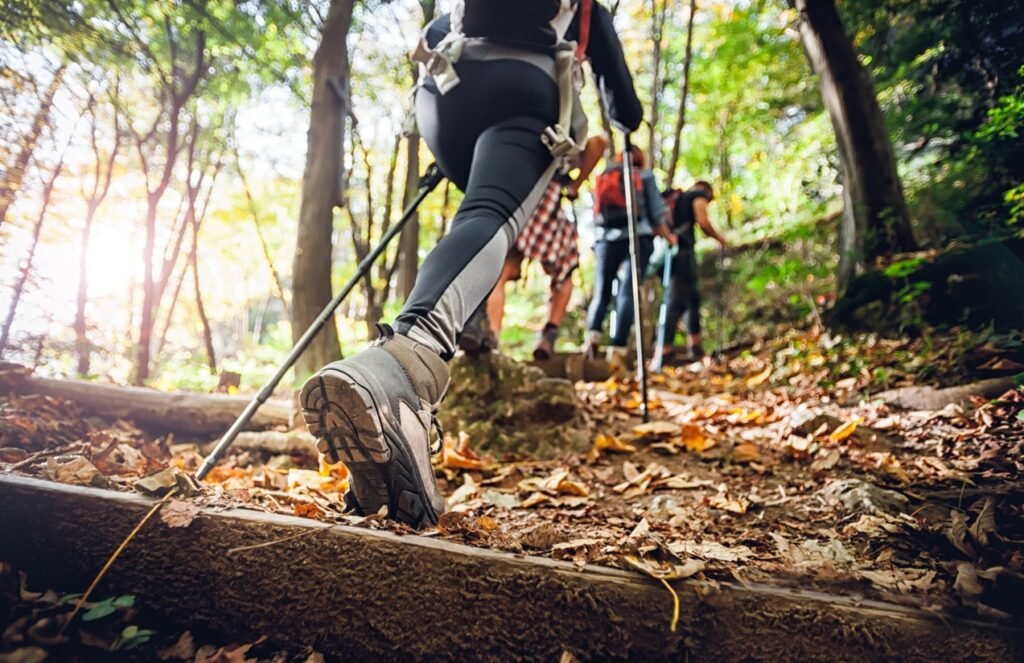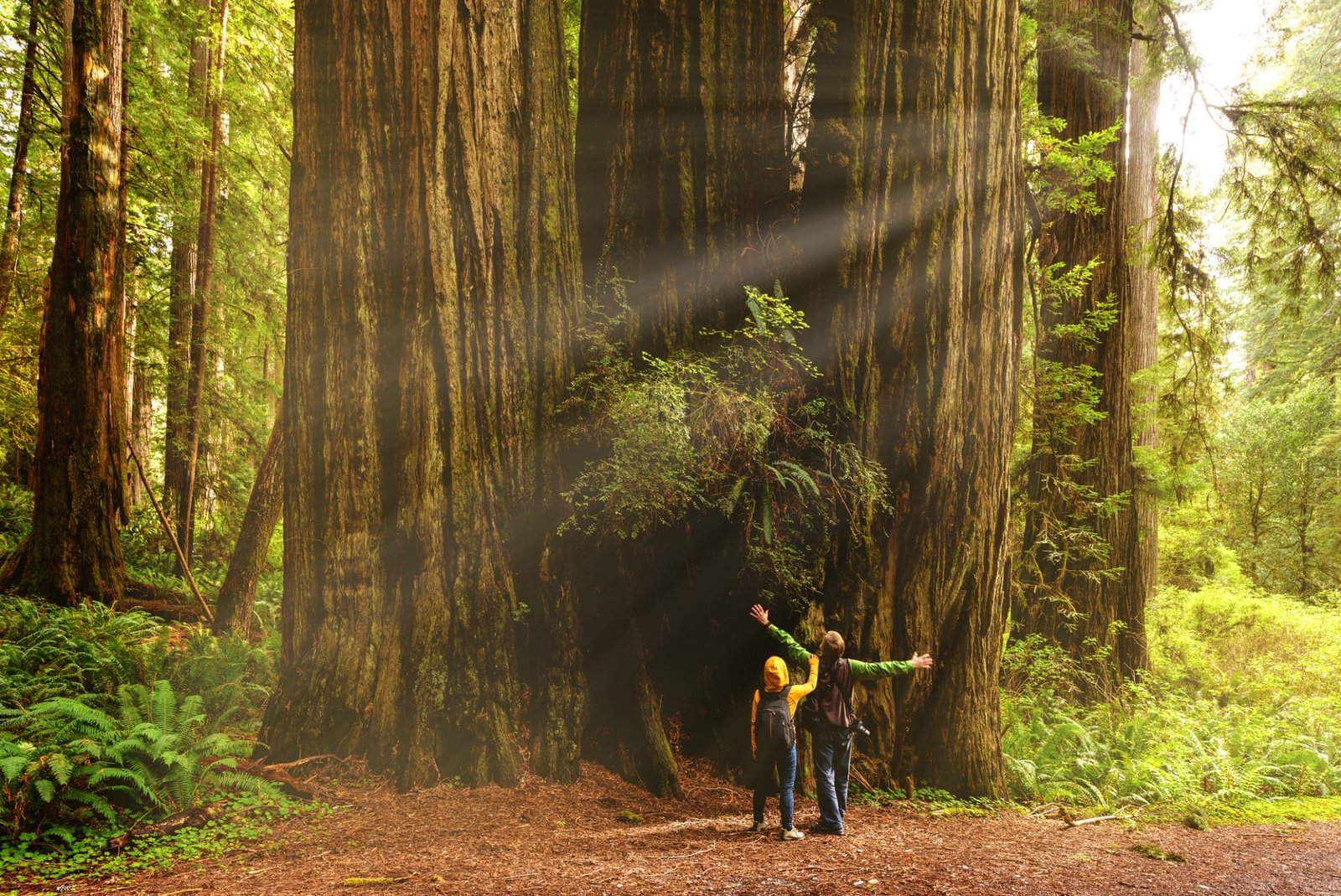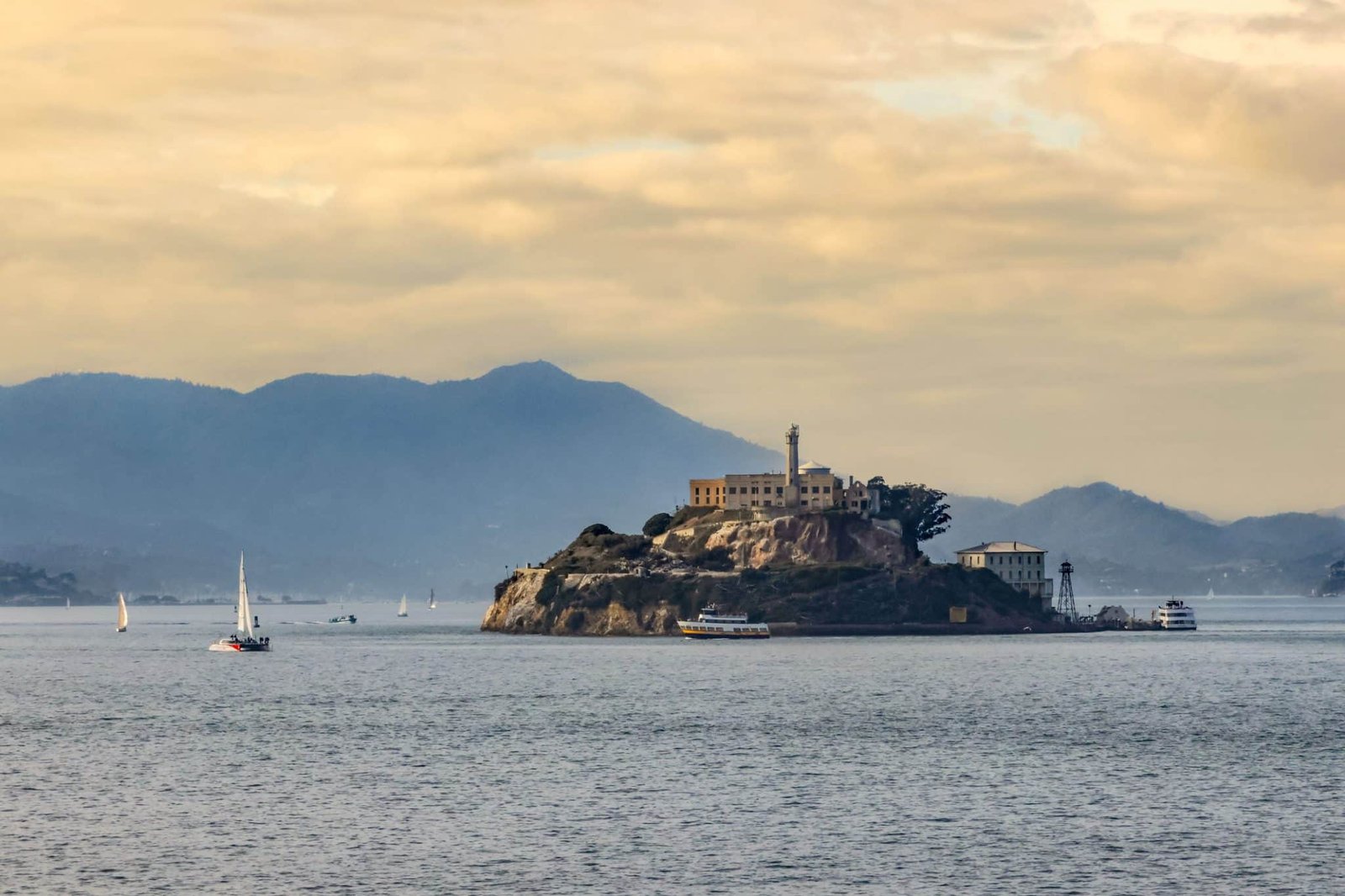Redwood vs Sequoia: An Honest Comparison Of These Epic Parks!
If you have found yourself California dreaming and yearning for excellent hiking trails in the great outdoors, then maybe it’s time you visited the national parks of the United States’ Golden State.
California is famed for its big cities: Los Angeles, San Francisco, and San Diego. But if you’re looking for a green forest rather than a concrete jungle, you can rest assured that Redwood and Sequoia national parks can deliver. However they are more different from each other than many realise…
The Redwood National and State Parks (RNSP) are a complex of one national park together with three state parks which are cooperatively managed and located in northern California. Comprising Redwood National Park and California’s State Parks: Del Norte Coast, Jedediah Smith, and Prairie Creek, the combined RNSP contains 139,000 acres (560 square kilometers).
It’s ideal for those looking for breath-taking hiking trails in the northern Californian redwood forests. The park is a UNESCO World Heritage Site too and has featured in the Jurassic Park and Star Wars movie franchises – for families visiting the locations is a great way to excite kids or any movie lovers and get them outdoors.
Sequoia National Park is an American national park in the southern Sierra Nevada east of Visalia, California. The park is to the south of Kings Canyon National Park. UNESCO designated the areas as the Sequoia-Kings Canyon Biosphere Reserve in 1976.
Sequoia National Park contains the highest point in the contiguous United States, Mount Whitney, and is a great place to trek and explore its mountains, rugged foothills, deep canyons, and the world’s largest trees. So if you’re looking for serious hiking, Sequoia will likely be the better park for you.
Of course showing you what makes each park different and unique from the other is impossible in just a few sentences, which is why we use our knowledge below with our honest comparison.
So read on as we show you which one is easiest to get to, which has the best hiking trails, wildlife, most impressive trees, which is best for a family visit and lots more. Let’s get started!
CONTENTS:
- Which Is Easier To Get To?
- Which Has The Best Hiking?
- Which Has The Best Trees?
- Which Is Best For Wildlife?
- Which Is Best For Families?
- What Time Of Year Is Best?
- Which Is The Better Choice?

Which Is Easier To Get To?
How easy it will be to reach either of these two national parks will depend largely on your starting point, but they are both reasonably easy to reach.
For international travelers, getting to Redwood National Park or Sequoia National Park can be a little bit more complicated than for domestic travelers.
Both parks are located in California, so you should look for flights into San Francisco or Los Angeles. San Francisco International Airport (SFO) is roughly halfway between the two parks and could be a good option for either park.
Alternative major airports include Los Angeles (LAX) and Portland (PDX). The airport in Los Angeles is convenient for Sequoia National Park, and Portland could also be an option for those looking to head to Redwood National Park.
Once you have reached one of the major airports, you then have options for traveling on to the parks themselves: a domestic flight or a road trip.

Redwood National Park is located in Northern California, along the coast. If you’re taking a domestic flight, the closest airport is the Arcata-Eureka Airport (ACV), which is about an hour’s drive from the park.
If you’re driving to Redwood, the park is located off of Highway 101, which runs along the coast from San Francisco to Oregon. However, keep in mind that the roads to the park can be winding and narrow, so it’s important to drive carefully, especially during the winter months.
Sequoia National Park, on the other hand, is located in Central California, in the Sierra Nevada mountains. The closest airport is Fresno Yosemite International Airport (FAT), which is about two hours’ drive from the park.
If you’re driving to Sequoia, the park is accessible from Highway 198, which runs through the San Joaquin Valley and into the foothills of the Sierra Nevada.

Which Has The Best Hiking?
Perhaps the most popular activity in the national parks is to enjoy the impressive network of hiking trails that criss-cross the parks.
While both parks have plenty of beautiful walks in the shadows of giant trees, the trails have slightly different characteristics in each park.
From gentle ambles among giant sequoias to moderate day hikes and full-throttle, thigh-burning ascents—including the highest point in the contiguous United States— Sequoia and Kings Canyon hiking trails deliver breath-taking experiences, whatever the topography and terrain. When it comes to hiking you can’t beat this park.
In contrast, for the most part hikes in Redwood National Park are pretty straightforward and gentle. Some are a little more challenging, but they’re usually accessible to all types of hikers, with less elevation gain than the trails in Sequoia. The hiking here is all about experiencing the giant redwoods themselves.
So let’s have a quick run-through of the best and the most popular trails in each of the two parks. By seeing what’s available, you can work out which park may suit you best:

The Best Redwood Hiking Trails
In general the hiking trails in Redwood National Park tend to be shorter and easier than you’ll get in Sequoia (more on those soon). For families, or those looking for a half-day trek, hiking in this park could be perfect.
1. The Redwood Creek Trail
This is a beautiful walk along a creek surrounded by giant redwoods. The 25-kilometer trail takes around five and a half hours to complete and is perfect for those looking to enjoy the tranquility of solitude.
The flat trail is relatively easy, but is best enjoyed during the summer months. However the bridges over the creek are only in place between June and September, and at other times you will need to walk through the water to continue—not ideal if you are only wearing sneakers!
Camping is allowed along the trail, as long as you have obtained a permit first, and is the only place in the park where you can camp outside of the designated campgrounds.
Also bear in mind that this trail is strictly for hikers – no bicycles, dogs, or horses are permitted.

2. The Tall Trees Grove Loop Trail
This is a 5.8-km out-and-back trail near the town of Trinidad, close to the northern California border. It’s a relaxed hike through a remote part of Redwood National Park, and it takes around two hours to complete.
The trail slopes gently down to the Redwood River through some beautiful groves of huge redwood trees. It is about a mile and a half down, then there is a one-mile flat loop at the bottom with interesting flora along with a few more huge redwoods.
Bear in mind that you will need to apply online for the free permit a couple of days in advance if you want to do this hike. The free permit will come with a gate code which will allow you access to the gated Tall Trees Access Road, which takes you to the start of this trail.

3. Berry Glen and Lady Bird Grove Trail
The ten-kilometer trails takes around three hours from start to finish and is considered a moderately challenging route with reasonable elevation gain.
The first half of the trail is the more strenuous part of the hike, as it’s mainly uphill, but the second half is a gentle descent and much easier on the thighs.
The route takes in plenty of giant redwood groves and fern-filled glades along its picturesque route, and you should keep your eyes open for elk along the way too. It’s also open all year round and is reasonably popular, although you may hardly see anyone else.

The Best Sequoia Hiking Trails
In general the hiking trails in Sequoia are more serious treks, and may be preferred by serious hikers who are visiting primarily to hike rather than sightsee. There’s also plenty of opportunities to take trails going off some of the main routes and find much more quiet, and peaceful areas compared to Redwood park – just make sure you know where you’re going.
1. Lakes Trail
This out-and-back trail comes in just shy of twenty kilometers in length and should take between six and seven hours to complete.
It is one of the most popular hiking trails in Sequoia National Park and the path climbs from the Wolverton trailhead to the three gorgeous alpine lakes—Heather, Emerald, and Pear—that gave the trail its name.
You can tackle this trail as a day trip on horseback or on foot, but horseback riding and pack use are limited to day use only.
If you want to make this an overnight hike, you’re limited to Shank’s Pony only, and you can make use of the designated wilderness campsites at either Emerald or Pear lakes.

2. Watchtower Trail
You should allow around four and a half hours if you plan to hit this thirteen-kilometer trail which is considered a moderately challenging route and is a very popular area for backpacking, camping, and hiking.
The path leads you to a viewpoint very close to the summit of The Watchtower. If you stick to the official Watchtower Trail, you will not reach the summit, but you can take a short off-trail scramble to the true summit if your legs are up to it and you know the route.
After the summit, the official trail descends to the beautiful Heather Lake. Snow can cause parts of this trail to be blocked during the winter months, so it’s best to check ahead with the visitor centers if you plan to visit at this time of the year.

3. Marble Falls Trail
This trail is a little over twelve kilometers long and takes a little under four hours to complete.
The moderately challenging route makes for a great springtime or winter hike through a deep canyon in the Foothills region of Sequoia National Park.
Springtime sees the walk at its most colorful as the wildflowers are out in bloom, and the track flattens out as you reach the Marble Falls, where crystal-clear water cascades over polished marble.
Be aware there are steep drops at the side of the trail in places, and if you are hiking with children, take extra care.

Which Has The Best Trees?
If you only intend to visit one of these parks to admire its massive trees, you have a difficult decision to make: visit the world’s largest known living single-stem tree or a tree that starred in the 1983 Star Wars film, The Return of the Jedi?
Before we get into that, you may have noticed both these parks are named after two different species of tree.
Sequoia National Park is named after the giant sequoia (Sequoiadendron giganteum), and Redwood National Park is named after the coast redwood (Sequoia sempervirens).
These two distinct species of tree are both very impressive: the giant sequoia is the largest species of tree by volume, and the coast redwood is the tallest tree species, and both can live to be more than 2,000 years old!
There are a couple of especially famous trees in each of the two parks, so next we’ll have a look at those to find out which park has the largest tree in the world by volume, which one houses the world’s tallest tree, and which one will probably be the choice of the majority of Generation X males:

Sequoia National Park: The Trees
1. General Sherman Tree
By volume, the General Sherman Tree is said to be the largest single-stem tree in the world and is believed to be between 2,200 and 2,700 years old!
The tree boasts impressive stats: a height of 83.8 meters (275 feet) and a diameter of 7.7 meters (25 feet), and it should not be missed if you’re visiting Sequoia National Park.
This tree (see photo below) is just a short one-kilometer walk from the parking, and, while it may not be the tallest tree in the world, it is among the tallest, widest, and longest-lived of all trees on the planet—pretty impressive!
2. General Grant Tree
Well, we are cheating a little here. The General Grant Tree is not actually inside Sequoia National Park, but it is right next door in Kings Canyon National Park, and the two parks are administrated together as one entity: Sequoia and Kings Canyon National Parks. So, we’re not cheating that much….
The General Grant Tree is the second largest giant sequoia tree in the world and is thought to be 1,650 years old.

Redwood National Park: The Trees
1. Big Tree
If you’re a fan of both massive trees and imaginative names (and sarcasm), you will probably want to check out Big Tree.
It has a circumference of 68 feet and is estimated to be 1,500 years old. It’s located on the Newton Drury Scenic Parkway, near the Prairie Creek Visitor Center, and the viewing platform is a two-minute walk.

2. Star Wars Tree
Okay, so maybe we’re cheating a little here too. The Star Wars tree is actually located in Grizzly Creek Redwoods State Park, a little to the south of the official Redwood National Park’s southern boundary.
But it’s not too far away (a little over fifty miles) and is perfect if you’re driving back to San Francisco.
Cheatham Grove, within the park, was transformed into the fictional moon of Endor by George Lucas and friends for the third installment of the Star Wars saga, and is definitely worth checking out.
3. Hyperion, Helios, and Icarus
These three trees are reputed to be the three tallest trees in the world. At least the three tallest “discovered” trees.
All three were discovered as recently as 2006, and Helios was the tallest tree when it was first discovered on the 1st of June that year. The following month, Icarus was discovered and was recorded as being a little shorter than Helios. And on the 25th of August, Hyperion was discovered and measured up to be 379.1 feet, making it the tallest known tree on the planet.
However, following the discovery, the trees received many visitors, and the surrounding area was damaged significantly enough for the park rangers to close the area to the public.

Which Is Best For Wildlife?
While Redwood National Park and Sequoia National Park are located in different regions of California and have distinct ecosystems, you can find similar species of flora and fauna in each.
In terms of the flora, we have already shown that the two parks have their own “stars of the show,” with Redwood National Park being home to the coast redwoods and Sequoia National Park being the home of the giant sequoias.
But in Redwood National Park, you can also spot a few impressive coast Douglas-fir trees, which have been measured at heights of over 300 feet (91 meters).
Sequoia National Park encompasses a larger range of elevation, and as such, its flora can be more varied, with alpine tundra regions above the tree line and conifer and pine forests as you move to lower grounds.
In terms of animal life, both parks have an impressive array to look out for, with many animals being present in both parks.
Animals that are encountered during visits to Sequoia National Park include coyote, badger, black bear, bighorn sheep, deer, fox, cougar, (pauses for breath) eleven species of woodpecker, various species of turtle, three species of owl, opossum, various species of snake, wolverine, beaver, various species of frog, and muskrat. Phew – quite an array!
Redwood National Park boasts a similar rollcall of impressive beasts, but as it’s located next to the coast, there can be a few other different species too.
Along its coastline, California sea lions, Steller sea lions, and harbor seals can be spotted living near the shore and on rocky outcroppings at the water’s edge.
Depending on the time of year, you may even be able to spot dolphins and Pacific gray whales a little ways offshore. And with black bear, coyote, cougar, bobcat, beaver, river otter, Roosevelt elk, and black-tailed deer roaming the forests, you may spot some interesting creatures while hiking.

Which Is Best For Families?
If you’re planning a family trip to Sequoia or Redwood national parks, you’ll be happy to know that there are plenty of activities that will appeal to both kids and adults alike.
With that the case, it’s usually down to what activities families prefer that will decide which park suits them best.
Here are a few ideas, aside from hiking the impressive trails and checking out the massive trees, for each park to get you started:
Redwood National Park: Family Activities
1. Beaches
Redwood National Park has a few beautiful beaches that are perfect for family activities.
For example at Klamath River Overlook, you can watch the whales while enjoying a picnic on the beach. While at Crescent Beach, you can explore the tide pools and search for shells.
2. Junior Ranger Program
The Junior Ranger Program is an interactive way for kids to learn about the park’s ecology and history.
By completing a series of activities and attending a ranger program, your child can earn a badge and certificate to commemorate their experience.
3. Kayaking
Kayaking is a great way to explore the rivers and estuaries in the park. You can rent kayaks and take an educational guided tour to learn about the park’s aquatic ecosystem and see some wildlife up close.

Sequoia National Park: Family Activities
1. Take A Scenic Road Trip
The Generals Highway is a beautiful scenic drive that offers stunning views of the park’s rugged mountains, forests, and canyons. The drive is a great way to see the park’s highlights from the comfort of your car.
2. Go Camping
Camping in Sequoia National Park is a great way to experience the park’s natural beauty up close.
There are several campgrounds to choose from, ranging from basic sites to more developed ones with amenities like showers and flush toilets.
3. Attend A Ranger Program
Ranger programs are a great way to learn about the park’s ecology, history, and wildlife. Kids will love participating in educational activities such as guided hikes, animal talks, and stargazing programs.

What Time Of Year Is Best?
If you’re planning a visit to Sequoia and Redwood national parks, the best time for your trip will depend on what you want to do and see during your trip.
If you’re looking to take in the massive trees at their most impressive, then the late spring and summer months are the best time to visit.
This is when the snow has melted and the weather is warmer, which means you can hike the trails and explore the parks without worrying about inclement weather. Also, spring sees the wildflowers in bloom, and it can be a colorful time to visit.
Late spring and summer are also the best times to see the parks’ wildlife in action. This is when animals like black bears, deer, and bobcats are most active and visible.
If, on the other hand, you’re interested in a quieter, more peaceful visit to either park, then the fall and winter months might be better suited to your trip.
The crowds are generally thinner during this time, which means you’ll have more space and time to yourself to enjoy the parks’ natural beauty in relative peace and quiet.
The fall season is also a beautiful time to visit as the trees change color and create a vibrant backdrop for your visit.
In winter, the parks take on a serene, almost otherworldly quality as the trees are covered in snow and the landscape is transformed.
However, it’s worth noting that winter weather can make some parts of the parks inaccessible, so be sure to check ahead of time to see what’s open and what’s not before you travel.

Redwood vs Sequoia National Parks: Which Is The Better Choice?
At the end of the day, both of these California national parks have plenty to offer their visitors, and which one will be best suited to your vacation plans will depend on what your priorities are for visiting.
Both parks contain some of the most impressive trees on the entire planet: the largest single-stem tree in the world by volume, the tallest trees, and even one that co-starred with Harrison Ford!
Hikers can enjoy breath-taking scenery on the trails in either park. If you’re looking for thigh-burning hikes with elevation gain, you may prefer Sequoia National Park. But if you enjoy the sea air, maybe Redwood National Park will suit you more.
With impressive wildlife in each park too, you can rest assured there’s no real “wrong choice” in this decision, and if time is on your side, you can even visit both parks if you’re struggling to decide—they’re both in the same state after all…








